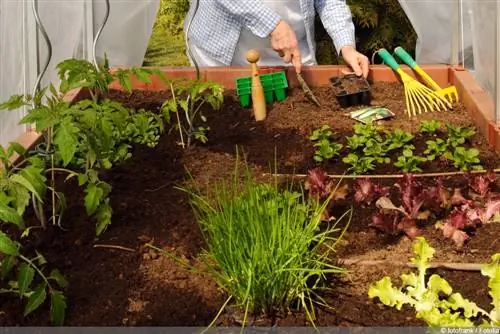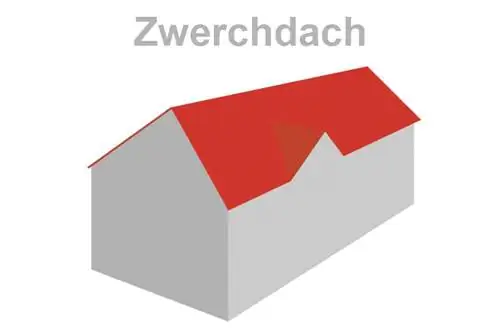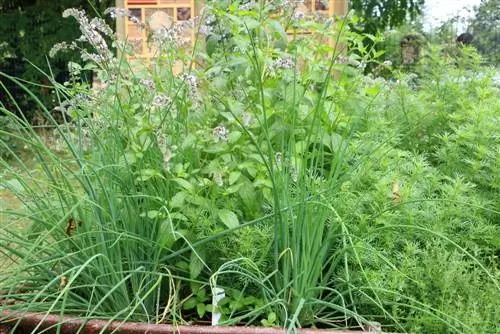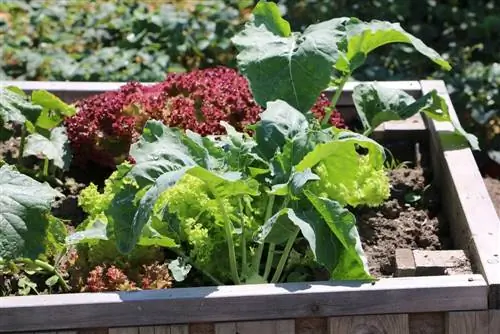- Author admin [email protected].
- Public 2023-12-17 03:39.
- Last modified 2025-06-01 06:48.
In creative garden design, a well-thought-out bed border deserves just as much attention as the arrangement of the plants. After all, the floral protagonists in the bed only come into their own with the appropriate frame. For a long time, plastic was one of the most popular options in the wide range of suitable materials. This guide highlights the advantages and disadvantages of whether the decision for a plastic bed border is still appropriate.
Advantages - list with explanations
Home gardeners with limited time available for garden care are specifically looking for an efficient bed border. It should be practical, time-saving and inexpensive to purchase. When it comes to modern garden design, criteria such as visual clarity and prosaic styling come into focus when selecting a bed edging. With numerous advantages, plastic has long been considered the ultimate in meeting these requirements perfectly. The following overview summarizes essential pro arguments:
- cheap
- weather and UV resistant
- easy care
- extremely long-lasting
- ideal for separating lawn edges and bedding plants
With a price per running meter of less than 1 euro, the plastic bed edging is unbeatably affordable to purchase. The low weight does not drive up transport and delivery costs, as is the case with building materials such as concrete, natural stone or wood. Industrial production in large quantities and the simple chemical manufacturing process further depress the price level. Home gardeners particularly appreciate that a plastic bed border is insensitive to moisture and sunlight. In contrast to natural materials such as wood or boxwood, maintenance requires little time. Regular waterproofing is overlooked, as is repeated topiary.
In terms of longevity, ecological building materials also lose out to plastic. Despite being less dense than, for example, ceramic or metal, plastic is extremely durable and resistant to breakage. The material is almost indestructible and does not decompose even after decades, even if it is permanently exposed to moist soil as a bed border.
The above-mentioned properties and advantages of plastic make plastic the ideal material for the separation between the bed and the lawn. With plastic as a barrier, plants will no longer grow into the lawn. Furthermore, the annoying cutting of lawn edges is over.
Disadvantages - overview with explanations
Regardless of the superficially convincing advantages, plastic has lost its position as a pioneer for bed edging. A crucial factor in the change of heart among home gardeners was the increase in awareness of nature and the environment. Since the trend towards natural gardens has gained momentum, chemical-artificial materials have been frowned upon - primarily plastic. The following overview summarizes all fundamental contrarian arguments:
- unnatural appearance
- unstable, wobbly attachment
- harmful to the environment because not biodegradable
These three counter-arguments are enough to finally catapult plastic for bed borders into the sidelines. With a plastic border, all efforts to create a stylish and natural bed design will be in vain. However, the manufacturers' efforts to simulate a wood or stone look with plastic frames do not change this. One of the primary tasks of a bed border is to highlight the bed as a separate garden space and at the same time to integrate it harmoniously into the overall picture. The optical break between dead plastic as a frame and living nature inside the bed is too serious for a successful consensus in appearance.
Since the low price is considered the main motive for buyers, production is saved in every respect. The result is feather-light modules that slip even in strong winds or light contact with feet or work equipment. Crooked bed borders are therefore common when gardeners decide to use plastic.
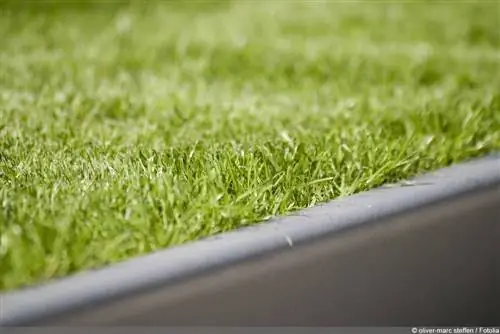
The pronounced weather resistance of plastic is based on chemical components. The material is therefore almost indestructible and not biodegradable. The consequences for people and nature are fatal. Our unreflective enthusiasm for the benefits of the material has led to around 8.3 billion tonnes of plastic being produced worldwide over the past 65 years. That amounts to more than 1 tonne of plastic per capita of the world's population. Half of this gigantic amount of non-decomposing matter comes from the last 15 years. Only 9 percent was recycled and 12 percent was burned. A devastating 79 percent are stored in landfills, floating in the world's oceans or have otherwise accumulated in the environment. The first plastic particles have been detected in the human body. By avoiding plastic bed edging as a home gardener, you are making a valuable contribution to protecting the environment.

